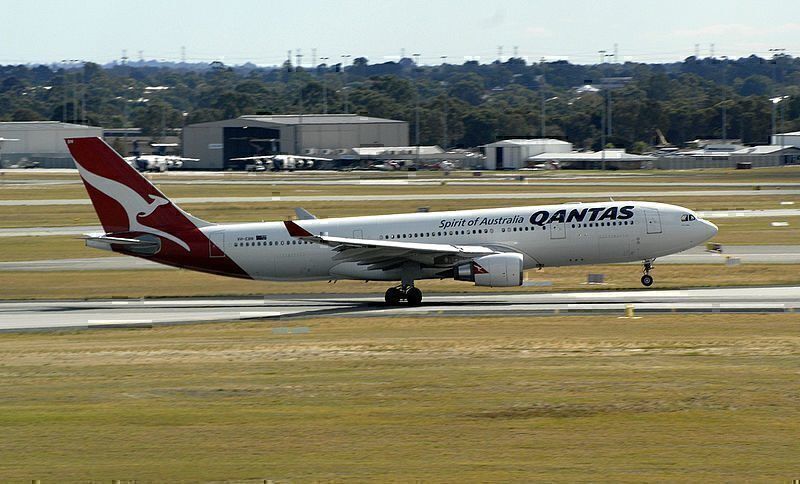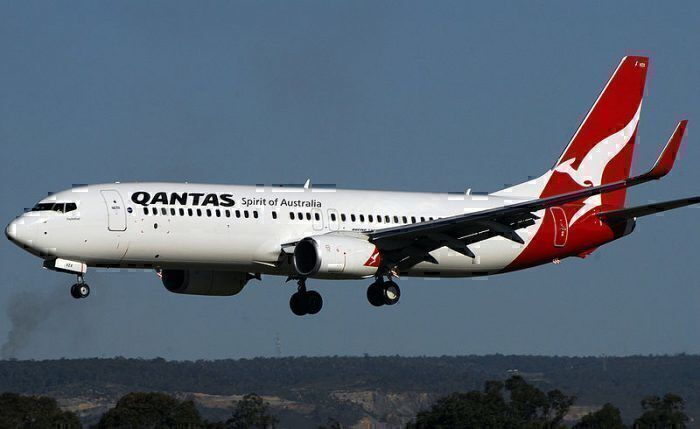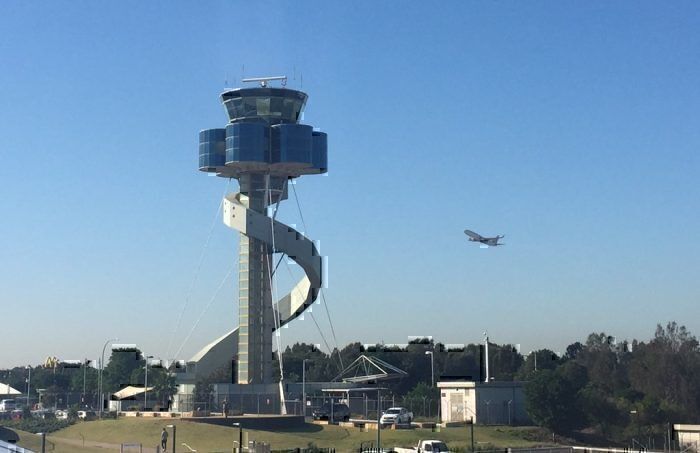Two Qantas jets breached minimum separation distances at Sydney Airport last week. The two jets, one landing from Brisbane and one departing for Melbourne had a “loss of separation issue” which has sparked an Australian Transport Safety Bureau (ATSB) investigation.
What happened?
As reported in The Aviation Herald, the incident occurred on Monday, August 5, 2019. QF459, a Qantas A330-200 was departing Sydney bound for Melbourne and lined up at runway 34R. At the same time, a Qantas 737-800 operating flight QF545 from Brisbane to Sydney was on final approach to runway 34R.
After the preceding aircraft has left 34R, Sydney tower cleared QF459 for takeoff along its assigned departure route.
Observing a possible separation issue, Sydney tower told QF545 to go around, soon after instructing the aircraft to turn into an easterly heading. This conflicted with the departure route of QF459, sparking a traffic avoidance collision alert.
The airborne A330 climbed above QF545, turning right downwind, defusing the situation. QF459 continued to Melbourne. QF545 landed in Sydney ten minutes later.
The ATSB calls the incident "serious" and has opened an investigation which is due to be finalized in the second quarter of 2020.
The Australian is reporting that the A330 had visual contact with the 737-800 and neither aircraft were in imminent danger. Qantas is fully co-operating with the ATSB investigation and in a statement said their crews followed ATC instructions at all times.
Early indications suggest Sydney ATC should not have cleared the Melbourne bound QF459 for departure.
Sydney ATC overworked and undermanned?
Sydney air traffic control has been claiming for some time that they are too heavily stretched and under-resourced. Staff are complaining that the amount of overtime they are expected to do is “crazy” and “unsustainable”. They claim that the hours required and the subsequent stress incurred is causing high numbers of employees to take sick leave.
The Sydney Morning Herald reports that Sydney ATC workers calling in sick caused disruptions (cancellations or delays) 14 times in 2018 - up from four times in 2017. This figure compares unfavorably against delays caused at Melbourne, Brisbane, and Perth airports due to ATC staff shortages.
Air traffic control workers are highly paid, reflecting the skill and demand placed on them. The workplace is also highly unionized. The Sydney Morning Herald notes that there were 113 traffic controllers in Sydney as of March 2019. Forty-five of these 113 employees worked in Sydney’s ATC tower. The operator of the tower, Airservices Australia, says it has more than enough workers to cover shifts and absences at Sydney tower, blaming the rate of overtime on “factors beyond our control”.
But the air traffic controllers union says Airservices Australia has systematically failed to hire and train more controllers over the years as Sydney Airport grew busier. Union spokesman Peter McGaune told The Sydney Morning Herald;
"It’s time Airservices took some really positive action to address the staff shortage and their continual reliance on overtime, which is causing work/life balance issues and fatigue management issues.”
Summary
Qantas notes that its crew followed ATC instructions and that it is assisting in the investigation. While there is and was never any suggestion passengers and crew were in danger, the incident should give Sydney ATC employees and their union more ammunition as they take their complaints of undermanning forward.
Simple Flying reached out to Qantas for comment on the incident but had not heard back prior to publication.



